| | Here are the Official Course Descriptions for the classes I teach most often (for adults & teens). The photos are examples of student artwork from each class.
Reportage (aka: Journal Sketching):Reportage* is a high-energy, high-speed attempt to capture the essence of an event – or a moment – in a sketchbook. It’s an incredibly dynamic way to record your experiences out in the world, without using a camera. We’ll start in class, drawing from the model. We’ll cover skills & techniques needed to have a rewarding, expressive journaling experience. In later classes we’ll venture out into the real world, where you will get to experience the thrills and challenges of reportage, and likely produce some very raw and expressive gems! It is highly recommended that you have considerable drawing skill and experience before taking this class. *[Pronounced: reh-por-TAHZH] 3 hrs, 6 weeks
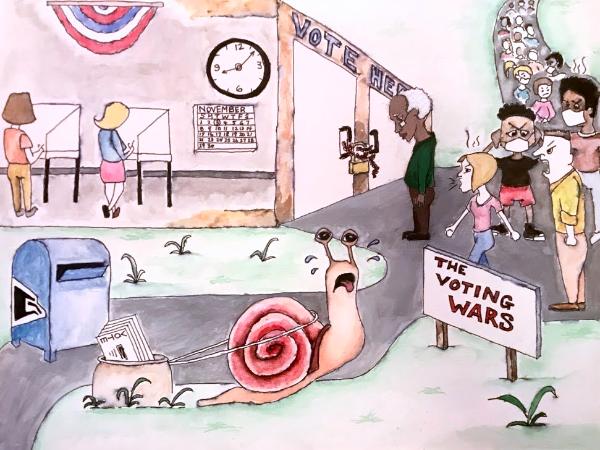 |
Virtual Op-Ed Illustration
Our world is [still!] changing at high speed – we are making history, right & left. But left to the news media, the story gets reduced to colorless sound bites. In class, you’ll get to chronicle your own history/her-story for posterity – visually! So, what is “Op-Ed”, anyway? “An op-ed article is …[one where] the author states their opinion about a given topic, often with a view to persuade the reader of their way of thinking…” – Benjamin Spall
The job of an op-ed illustration, then, is to capture the essence of the opinion, (in this case, yours).
Techniques will be offered to help you sort out your thoughts & feelings, and turn your passionate opinions into strong visual statements.
Basic drawing skills are all you need. Individual guidance is provided using Zoom’s breakout rooms. Artwork is shared via Google Photos, or screen-shared if you have drawing software. We’ll have on-camera demos and group critiques in each class.
More info for the curious: "An op-ed, short for "opposite the editorial page", is a written ... piece typically published by a newspaper or magazine which expresses the opinion of an author ..."
“Despite the “op” in “op-ed” not standing for “opinion,” op-eds are often called opinion pieces because, unlike standard news articles, the authors of op-eds are encouraged to give their opinions on a certain topic, as opposed to simply reporting the news.” - Benjamin Spall https://benjaminspall.com/op-ed/ So, the job of an op-ed illustration, then, is to capture the crux of the opinion, or to represent the 2 sides of the story (with a bias towards the author’s perspective). “Art directors rely on illustrators ... to help impart information and express complex ideas. Editorial illustrations bring stories to life and entice readers to engage with content.” - Jenny Carless from Adobe Create
In class, the students are the authors, and the opinion is expressed visually (though students may employ writing, as well). > Students may approach the artwork conceptually / intellectually, or intuitively. It’s all good! Class exercises will help get to the root of the matter. > The idea is to develop a concise image that illustrates your point. (See some of Benjamin Spall’s tips below.)*
In My Opinion (heh-heh), it's a great way to work out your own thoughts, feelings, & opinions on an issue that is important to you. The topic can be anything; it doesn’t need to be political.**
Click HERE or on the image above to SIGN UP
Here's what one student had to say about class: I found Stacy to be easy to talk to and very understanding, especially about the art creation process. I had a very general idea that I felt strongly about and wanted to share but I didn't know how to put it into images or even words. Stacey made it possible. She gave me exercises and tools that were very helpful. She asked me questions that made me think in a very productive way. I would say that she actually acted as a sort of 'midwife' to the birth of my intended art images.
The other participants in the class also had good suggestions and it proved to be a healthy part of my creative process to see their creative processes unfolding before me.
This is going to sound funny but I found myself forgetting that this class was online. The class had such a creatively stimulating energy for me that for a while I felt I was somewhere else and not at home on a zoom. - Nancy M.; Sept 2020
Even more info for the very curious:
* Illustrators benefit from these tips as much as the writers:
Some tips on how to write an op-ed, from Benjamin Spall:
- Get to the point: The moment a reader ... starts reading your op-ed article they need to know what it is about, and why it matters...
- Have a clear thesis: Submitting a meandering opinion column is a surefire way to ensure you do not hear back from the editor. Outline your entire op-ed before sitting down to write, and keep a clear thesis in mind.
- Write what you know: …[have] authority in the topic you’re writing about…
Students will get lots of guidance on focusing, teasing out ideas, and creating clear images in class. Let’s see what comes of it…
** Controversial topics may come up in class, & guidelines will be used to create a safe space for expressions of all opinions. (Ask me about my experience with facilitating constructive communication convos.) Send me your Questions and concerns, &/or requests for Zoom info: sleanza.art@gmail.com
Here's what another student had to say: This was my first on-line art class, and I was curious to see how a class would work in a virtual format. The answer: Impressively well! I think sharing via Google Photos worked well.
The feedback from the instructor ...& from entire class… was very helpful. This form was a wonderful way to express myself.
As a newcomer to art classes, my goal was to explore how art “works” and what formats I most enjoy. This class introduced me to an art form I never tried before, and it was a great experience. - Laura E., September 2020
This class is conducted online! A computer with audio, video, and internet functionality is required.
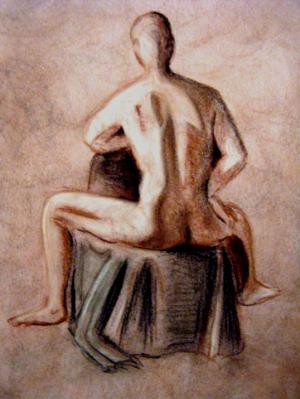 |
Figure Drawing: Heighten your visual awareness with tools and exercises designed to access the creative (right) side of the brain. We will draw from the model, focusing on process (skill-building) more than product. This is a high-energy class! It will help you loosen up as your drawing skills improve. Demos, lots of practice, and individual guidance are provided. Ideal for beginners, as well as practicing professionals! Limited to 12 students. 3 hours; 7 sessions
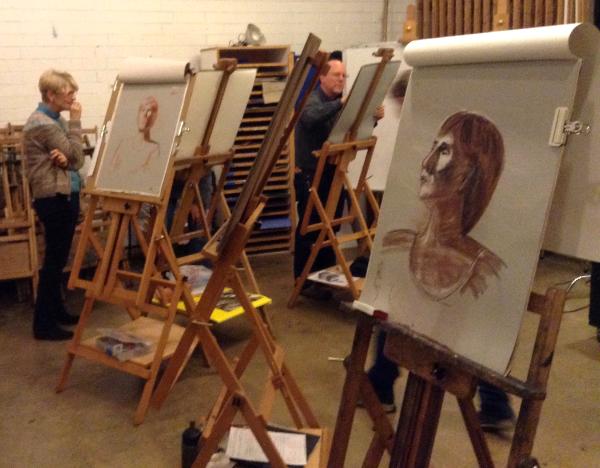 |
Portrait Drawing:
We
will employ basic observation skills and
rudimentary anatomy lessons to learn the structure of the head, neck,
shoulders, then eyes, nose, mouth, & ears. Then we'll delve into
the sublime & juicy stuff: expression! Including the subtle
changes that can alter the expression entirely. Different races &
age groups will be covered; primarily through HW assignments. In each
class, there will be gesture warm-ups, one or two demos, and one or
two poses for the remainder of the class, with individual guidance
throughout. We'll have one model for the final two class sessions.
In
order to capture the essence of your subject, a willingness to
surrender to the art-making process is absolutely necessary! You must
become
that which you attempt to capture. So, come with an open mind!
3 hours; 7 sessions
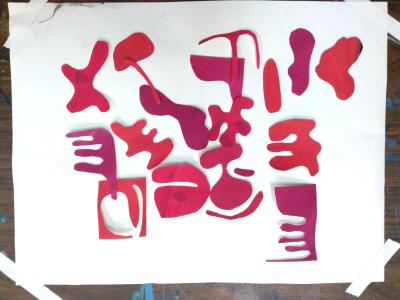 |
Find Your Artistic Voice This on-going class offers tools & techniques to help you find a clear path to your creative source. Warm-ups and exercises are designed to by-pass your inner critic, encourage artistic exploration, and increase confidence in your authentic self-expression… If you are at the beginning of your art-making journey, or need guidance in taking the next big leap, this class is for you.
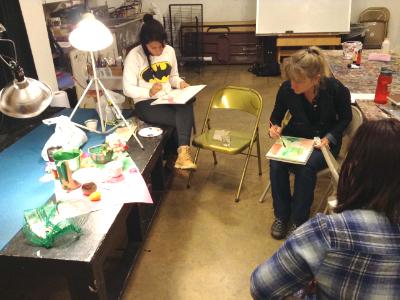 |
Exploring
Color
There's
both a science & art to color-mixing. The first 3 classes will
cover the science (technical) part: mixing the colors. Students will
make color wheels & charts with
the art media of their own choice,
so they can use them for reference at home. The next 3 classes will
begin to explore the big challenges (the artistic part): how &
where to use the colors once you've mixed them. It will include the
affects of lighting on color, transparent vs. opaque colors, color
relativity & placement, and
perhaps more.
There will be demos for each lesson, using a variety of media, (ex:
acrylics, oil pastel, watercolor) including whatever the students
bring in. Practice exercises will be offered for students who finish
the lesson work early. By the end of the course, students who
complete the work will be able to mix any color they desire.
The
study of the use of color could take years to master! Though this
class is just a basic introduction to color theory for beginners &
intermediates, it will give you enough information to keep you
happily exploring color for a long time!
3 hours; 7 sessions
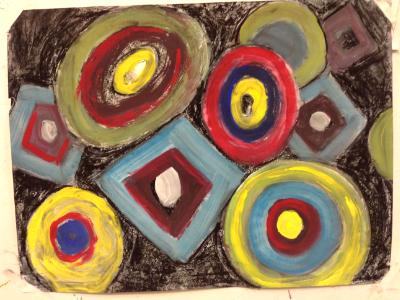 |
Exploring Abstract Art 1 The main difference between representational and non-representational art is that, in the latter, we draw from inner (subjective) vision instead of outer (objective) vision. “Abstract” art includes the entire range between the two. The primary focus of the class is to access that inner vision and develop it. How do we do it? PLAY! We explore the intuitive exercises created by early Western abstract artists & Surrealists, designed to access the subconscious mind, & bypass the Inner Judge! There will also be a bit of history, and plenty of slides of some of the greats, for inspiration. With practice, students will begin to form their own personal “language” of shape, line, symbol and color, while exploring basic drawing elements and composition. This is another high-energy class! Beginners are welcome, as well as established artists who desire to deepen their art-making experience. No experience is necessary, just a desire for spirited adventure! Repeat students are welcome, too. Limited to 10 students. 3 hours; 6 sessions
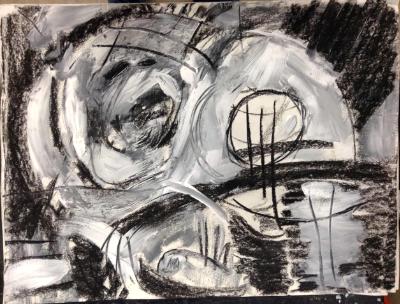 |
Exploring Abstract Art 2This is a continuation of Exploring Abstract Art 1. Here, though still developing their own inner ‘language’, students have the option to shift focus towards responding to cultural influences, expressing their personal views of the outer world. The methods will be the same as in Exploring Abstract Art I.
...By the way, if you liked anything you read here, please click the "Like" button below; it helps spread the word. Thanks! |
Be the first to post a comment.
|
|
| This website is made possible by an Emerging Artists Grant from the Durham Arts Council with support from the North Carolina Arts Council, with funding from the state of North Carolina and the National Endowment for the Arts, which believes that a great nation deserves great art. RSS |  |
|
|